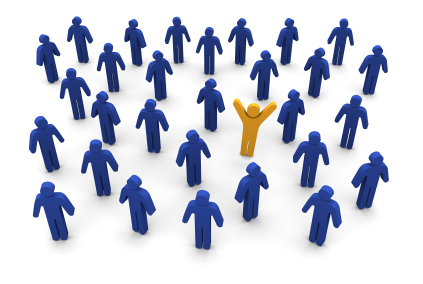
No matter how many friends you have on Facebook and MySpace, you won't have more real-life friends than the average person.
Using mathematics to model online social networks is an evolving field, with techniques that have been used to model human interaction, such as network modelling, moving into the online world. Users of online social networks tend to build up long lists of "friends" with whom they only occasionally interact, if at all. The existing techniques have now been used to model these weaker relationships.
Given that we can maintain more weak relationships online than we can in real-life, it is an interesting question to ask whether or not online social networks create as many close friendships as in real life. According to Will Reader of Sheffield Hallam University, the answer is no, and in this there is an interesting scientific and social point to be found.
Although fans of social networking sites say that they encourage relationships, Reader found that people who use these sites tend to only have around five close friends — the same number as people who are not online. The study investigated the idea that online networks reduce the personal investment needed to make new friends by lowering the perceived risk of doing so and found that face-to-face encounters are still the most important factor in establishing close friendships.
The research is based on interviews with around 200 users. Ninety percent of "close" online friends have been met face-to-face, with the remaining ten percent likely to be friends of close friends who are perceived as having many of the mutual friend's attributes.
Behavioural ecologists argue that making friends can be evolutionarily costly because it involves an investment of time and energy in another person in the hope that they will some time in the future provide reciprocal benefits — that is, there is a risk involved. According to Reader, this investment can only be made face-to-face as it needs to be based on honest information — no social networking profile is 100% honest. Indeed, most people have carefully crafted online profiles.
"It's easier to spot honest signals when meeting someone face-to-face using facial and bodily cues," said Reader, "whereas it's harder to spot dishonest signals online. It is very easy to be deceptive if you cannot see or hear someone you are communicating with."
In terms of evolution, the size of human social groups is limited by our ability to communicate with each other, and whilst online social networks may never replace real-life networks, they may aid communication and bring about some real life changes. Dr Reader argues that whilst the number of close friends we have remains unchanged since the advent of online social networking, the number of weak friends we have has increased.
"It seems that the number of weak friends does go up — the number of these virtual nodding types of friendship is changing," he said.
Social networking sites allow the less secure amongst us to race each other to 100, 200, or even 1000 friends, most of whom we won't know. It has also given rise to the idea of the "trophy friend" — someone that looks great on your friends list and on whose message board you can write your witty remarks. Reader called this online badge of celebrity the "Lily Allen" effect. Lily Allen became a famous singer after releasing music on MySpace, and now has over 400,000 friends.
"It's not uncommon to see sites with 1000 friends. Most are weak friends, while some are trophy friends. Everyone is friends with Lily Allen."
Another recent study also showed that social networking does not bring down our real-life social barriers by demonstrating that your ethnicity and socio-economic background influences your choice of online social network to a statistically significant level. The work, published in the Journal of Computer-Mediated Communication, found that for American students, white students prefer Facebook, Hispanic students prefer MySpace, and Asian and Asian-American students are least likely to use MySpace but use less popular social network sites Xanga and Friendster.
"That race, ethnicity and the education level of one's parents can predict which social network sites a student selects suggests there's less intermingling of users from varying backgrounds on these sites than previously believed," said author Eszter Hargittai.
So it seems that whilst social networking sites are very popular, practically they are simply a means of communicating with those we already know (unless we are deliberately building up our friends list and trophy friends). Past research by Professor Robin Dunbar at Liverpool University showed that the average person has a social network of around 150 friends — this is the supposed cognitive limit to the number of individuals with whom any one person can maintain stable social relationships. Most heavy users of online social networks will probably have more than this, but don't communicate with most. I have 300 on MySpace (go on, you can befriend me, although it's out of date and I know no one on my list), and 300-odd on Facebook (you can try to befriend me but I keep this one more serious, so don't take offence if I don't accept...) And employment law firm Peninsula has concluded that workers wasting time on Facebook cost UK businesses £130 million a day.
For more information on how network analysis is used to model human behaviour, see the Plus article United Kingdom - twelve points for the mathematics of the Eurovision song contest, Rap: rivalry and chivalry to learn how network analysis can be used to model communities of rap singers, and Networks: nasty and nice for an overview of network analysis. Anyway, back to changing my Facebook status...